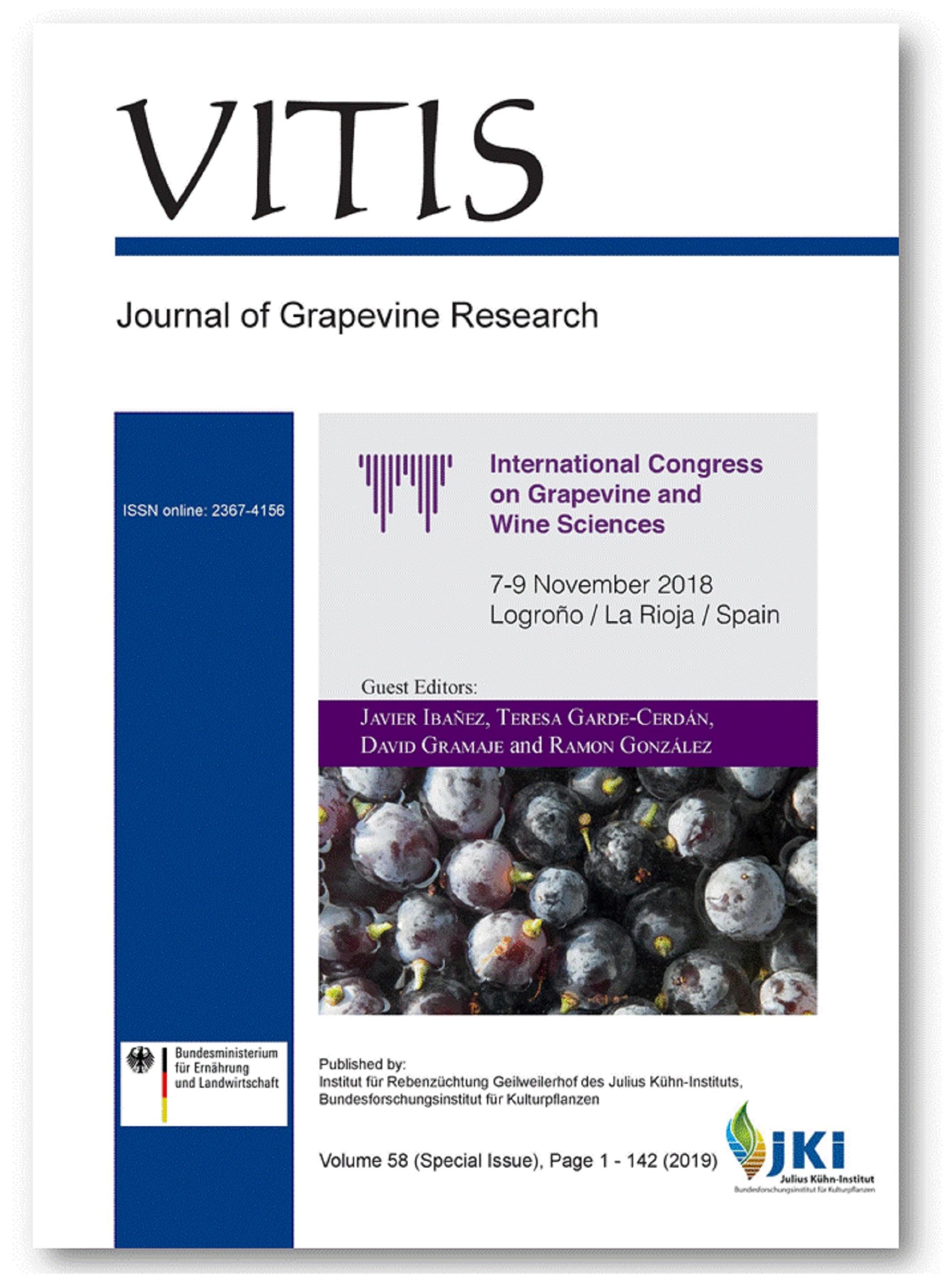Effect of ground-cover management on predatory mites (Acari: Phytoseiidae) in a Mediterranean vineyard
DOI:
https://doi.org/10.5073/vitis.2019.58.special-issue.25-32Keywords:
agroecology; conservative biological control; cover crop; tillage; population dynamics; Typhlodromus.Abstract
Most predatory mites belong to the family Phytoseiidae (Acari). Throughout the world, phytoseiids are involved in the biological control of phytophagous mites in vineyards. Conservative strategies, including cover-vegetation management, are essential to achieve environmentally friendly viticulture. The abundance and diversity of phytoseiid mites in the grapevine canopy and the vegetal ground cover of a Mediterranean vineyard were surveyed by weekly samplings, from early May until the end of September for two years (2016 and 2017). Three types of soil management without herbicide application were analysed and referred to as "Tillage", "Spontaneous Cover", and "Flower-driven Cover" treatments. Six phytoseiid species were collected on the grapevine canopy, with Typhlodromus pyri being the dominant species (99.5 %). Five phytoseiid species were recorded in the ground cover, with Typhlodromus and Neoseiulus as the major genera. The Flower-driven Cover treatment showed the highest abundance of phytoseiids in the grapevine canopy. However, both species richness and abundance of phytoseiid mites on the ground-cover vegetation were highest in the Spontaneous Cover treatment. These observations suggest that improving vegetation cover would promote both the abundance and diversity of phytoseiid mites in vineyards because the greater supply of pollen would enhance their survival. Therefore, the use of cover crops in vineyards represents a means of improving vineyard ecosystems by conservative biological control.
Downloads
Published
Issue
Section
License
The content of VITIS is published under a Creative Commons Attribution 4.0 license. Any user is free to share and adapt (remix, transform, build upon) the content as long as the original publication is attributed (authors, title, year, journal, issue, pages) and any changes to the original are clearly labeled. We do not prohibit or charge a fee for reuse of published content. The use of general descriptive names, trade names, trademarks, and so forth in any publication herein, even if not specifically indicated, does not imply that these names are not protected by the relevant laws and regulations. The submitting author agrees to these terms on behalf of all co-authors when submitting a manuscript. Please be aware that this license cannot be revoked. All authors retain the copyright on their work and are able to enter into separate, additional contractual arrangements.



